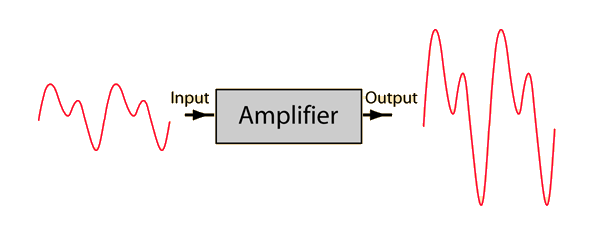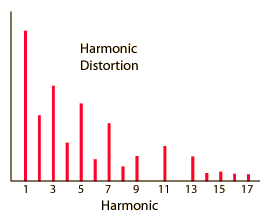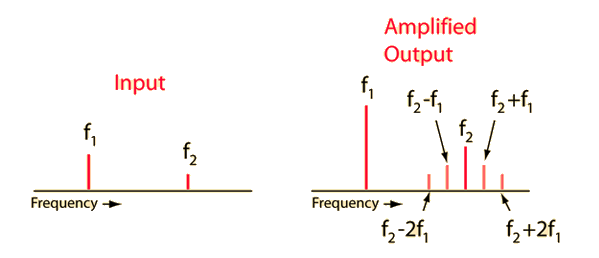Amplifiers
The task of an audio amplifier is to take a small signal and make it bigger without making any other changes in it. This is a demanding task, because

a musical sound usually contains several frequencies, all of which must be amplified by the same factor to avoid changing the waveform and hence the quality of the sound. An amplifier which multiplies the amplitudes of all frequencies by the same factor is said to be linear. Departures from linearity lead to various types of distortions.
The operational details of amplifiers are buried in the field of electronics, but for audio purposes it is usually safe to say that current commercial audio amplifiers are so good that a normally operating amplifier is seldom the limitation on the fidelity of a sound reproduction system. One must be sure that the amplifier can provide enough power to drive the existing loudspeakers, but otherwise amplifiers are typically one of the most trouble-free elements of a sound system.
Sound reproduction concepts
| HyperPhysics***** Sound | R Nave |


